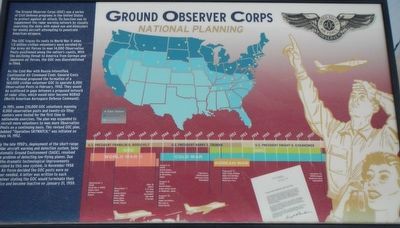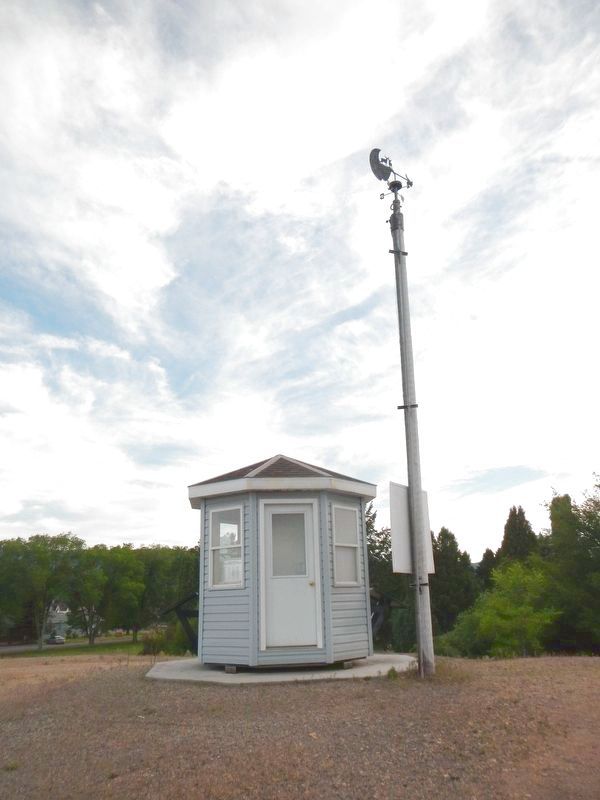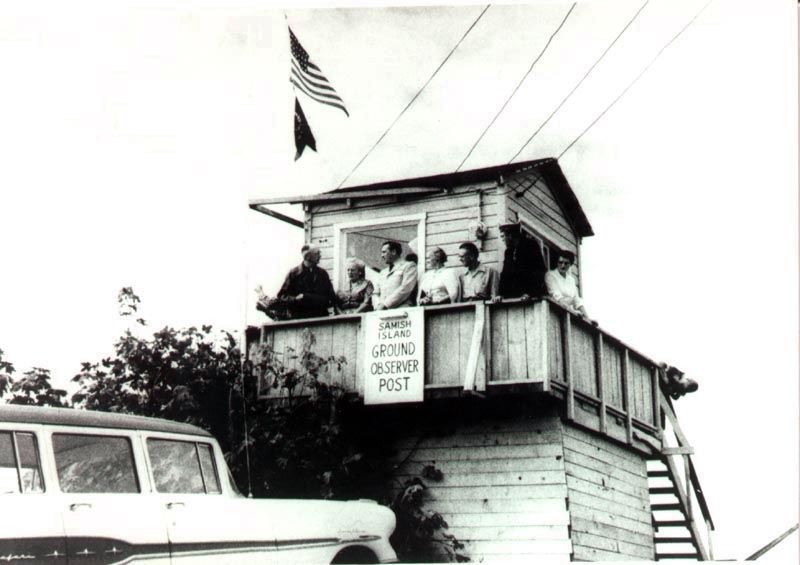Soda Springs in Caribou County, Idaho — The American West (Mountains)
Ground Observer Corps National Planning
Inscription.
The Ground Observer Corps (GOC) was a series of Civil Defense programs in the United States to protect against air attack. Its function was to supplement the radar warning network by visually searching the skies with naked eye and binoculars for enemy aircraft attempting to penetrate American airspace.
The GOC traces its roots to World War II when 1.5 million civilian volunteers were enrolled by the Army Air Force to man 14,000 Observation Posts positioned along the nation's coasts. With the declining threat to America from German and Japanese air forces. the GOC was disestablished in 1944.
As the Cold War with Russia intensified, Continental Air Command Cmdr. General Ennis C. Whitehead proposed the formation of a 160,000 civilian volunteer GOC to operate 8,000 Observation Posts in February, 1950. They would be scattered in gaps between a proposed network of radar sites, which would later become NORAD (North American Aerospace Defense Command).
In 1951, some 210,000 GOC volunteers manning 8,000 observation posts and twenty-six filter centers were tested for the first time in nationwide exercises. The plan was expanded to recruit more volunteers to man more Observation Posts on a continuing basis. This revised GOC plan. dubbed "Operation SKYWATCH," was initiated on July 24, 1952.
By the late 1950's, deployment of the short-range radar warning and detection system, Semi-Automatic Ground Environment (SAGE), resolved the problem of detecting low-flying planes. Due to the dramatic technological improvements provided by this new system, in November, 1958 the Air Forced decided the GOC posts were no longer needed. A letter was written to each volunteers stating the GOC would terminate their service and become inactive on January 31, 1959.
Topics. This historical marker is listed in this topic list: War, Cold. A significant historical date for this entry is January 31, 1959.
Location. 42° 39.402′ N, 111° 36.316′ W. Marker is in Soda Springs, Idaho, in Caribou County. Marker can be reached from East 1st Street South near South Main Street. Touch for map. Marker is in this post office area: Soda Springs ID 83276, United States of America. Touch for directions.
Other nearby markers. At least 8 other markers are within walking distance of this marker. Ground Observation Corps Soda Springs Post (here, next to this marker); Ground Observer Corps National Campaign (within shouting distance of this marker); "It Roars Like a Mad Dragon" (within shouting distance of this marker); George W. and Leah Wallet Gorton (within shouting distance of this marker); The Springs of Soda Springs (within shouting distance of this marker); Niels Anderson ---- Mary Christoffersen Anderson (within shouting distance of
this marker); Travertine Terraces - World Famous Water (about 300 feet away, measured in a direct line); Wagon Box Grave of 1861 (about 300 feet away). Touch for a list and map of all markers in Soda Springs.
More about this marker. This marker is located in Geyser Park.
Also see . . . Oldies and Oddities: When Civvies Scrambled Fighters - Smithsonian Air & Space. Skywatch observation posts operated 24/7/365. A training manual noted that anyone “looking for an easy job or with the intention of making anything other than an all-out effort” need not apply. Volunteers received a set of wings and a patch, and by amassing long hours on duty, could earn citations. By the mid-1950s, 400,000 volunteers were working at 16,000 outposts. (Submitted on July 27, 2017, by Barry Swackhamer of Brentwood, California.)
Credits. This page was last revised on July 29, 2017. It was originally submitted on July 27, 2017, by Barry Swackhamer of Brentwood, California. This page has been viewed 505 times since then and 46 times this year. Photos: 1, 2, 3. submitted on July 27, 2017, by Barry Swackhamer of Brentwood, California.


